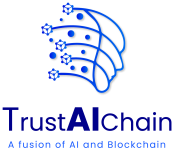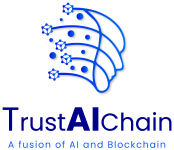What is Data Provenance?
Data provenance refers to the documentation of the origins and history of data, detailing how it has been collected, processed, and transformed over time. In machine learning, understanding the provenance of data is essential for verifying its authenticity and quality, which directly impacts the performance and reliability of models.
The Role of Blockchain in Data Provenance
With its decentralized and immutable ledger, blockchain technology offers a robust solution for tracking data provenance. By recording each transaction and modification of data on a blockchain, we can ensure that the data history remains transparent and tamper-proof. This is especially useful in environments where data integrity is critical, such as healthcare, finance, and autonomous systems.

Integrating Blockchain with TensorFlow
TensorFlow, an open-source machine learning framework, is widely used for developing and deploying AI models. Integrating blockchain with TensorFlow involves creating a system where every data used in model training and evaluation is recorded on a blockchain. Here’s how it works:
Data Collection: Each dataset collected for training is hashed, and the hash is stored on the blockchain. This hash acts as a unique fingerprint for the dataset.
Python
import hashlib
# Example code to hash a dataset
def hash_dataset(dataset):
dataset_bytes = dataset.encode(‘utf-8’)
dataset_hash = hashlib.sha256(dataset_bytes).hexdigest()
return dataset_hash
dataset = “example_dataset”
dataset_hash = hash_dataset(dataset)
print(“Dataset Hash:”, dataset_hash)
Data Processing and Transformation: Any transformation or processing step applied to the data (e.g., normalization, augmentation) is also recorded on the blockchain. This includes the original hash, the transformation applied, and the resulting hash.
Python
import json
# Example code to log data transformation
def log_transformation(original_hash, transformation, resulting_hash):
log_entry = {
“original_hash”: original_hash,
“transformation”: transformation,
“resulting_hash”: resulting_hash
}
# This log entry would be recorded on the blockchain
print(json.dumps(log_entry, indent=4))
original_hash = dataset_hash
transformation = “normalization”
resulting_hash = hash_dataset(“normalized_dataset”)
log_transformation(original_hash, transformation, resulting_hash)
Model Training and Evaluation: When the data is used to train a TensorFlow model, the details of the training process, including hyperparameters, model architecture, and training duration, are logged on the blockchain. This ensures that the entire training process is transparent and reproducible.
Python
import tensorflow as tf
# Example code to log model training details
def log_training_details(model_details, training_params):
log_entry = {
“model_details”: model_details,
“training_params”: training_params
}
# This log entry would be recorded on the blockchain
print(json.dumps(log_entry, indent=4))
model = tf.keras.Sequential([tf.keras.layers.Dense(10, activation=’relu’), tf.keras.layers.Dense(1)])
model_details = model.to_json()
training_params = {“epochs”: 10, “batch_size”: 32}
log_training_details(model_details, training_params)
Data Modifications: Any modifications to the data, such as cleaning or correcting errors, are recorded. This allows for a complete audit trail, showing how the data has evolved.
Python
# Example code to log data modifications
def log_data_modification(original_hash, modification_details, resulting_hash):
log_entry = {
“original_hash”: original_hash,
“modification_details”: modification_details,
“resulting_hash”: resulting_hash
}
# This log entry would be recorded on the blockchain
print(json.dumps(log_entry, indent=4))
modification_details = “error_correction”
resulting_hash = hash_dataset(“corrected_dataset”)
log_data_modification(original_hash, modification_details, resulting_hash)
Benefits of Blockchain-Enabled Data Provenance
Integrating blockchain for data provenance in TensorFlow models offers several significant benefits:
Traceability: Each step in the data lifecycle is recorded, making it easy to trace back to the source and verify the integrity of the data.
Accountability:With an immutable record of all data modifications and usage, stakeholders can be held accountable for any changes or errors in the data.
Enhanced Security: The decentralized nature of blockchain ensures that no single entity can alter the data history, reducing the risk of data tampering and fraud.
Regulatory Compliance: Many industries are subject to strict data governance regulations. Blockchain can help organizations comply by providing a transparent and verifiable record of data handling.

Real-World Applications
The integration of blockchain and TensorFlow for data provenance is not just theoretical; it has practical applications across various industries:
Healthcare:Ensuring the provenance of medical data used in AI models can improve the reliability of diagnostics and treatment recommendations while complying with health data regulations.
Finance: Tracking the origin and modifications of financial data can enhance the trustworthiness of AI-driven financial models and prevent fraud.
Supply Chain: In logistics, blockchain can help verify the authenticity of data used in predictive models, ensuring all stakeholders have a transparent view of the data flow.
In Summary
As AI continues to permeate different aspects of our lives, the importance of data integrity cannot be overstated. By leveraging blockchain technology for data provenance, we can ensure that the data used in TensorFlow models is authentic, traceable, and secure. This integration enhances the reliability of AI models and fosters a culture of accountability and transparency in data handling practices.
Embracing blockchain for data provenance is a step towards more robust and trustworthy AI systems, paving the way for ethical and impactful innovations.







